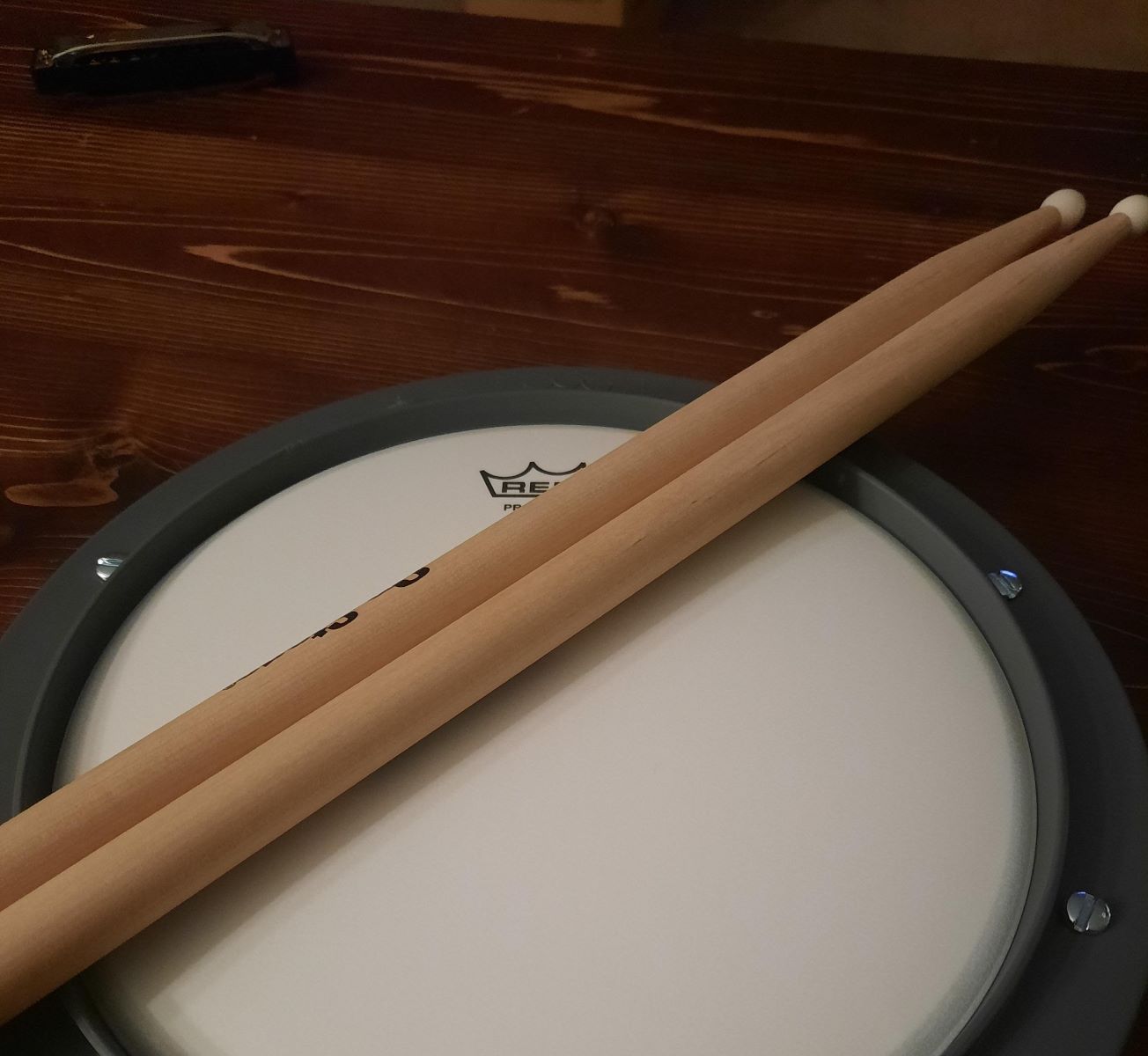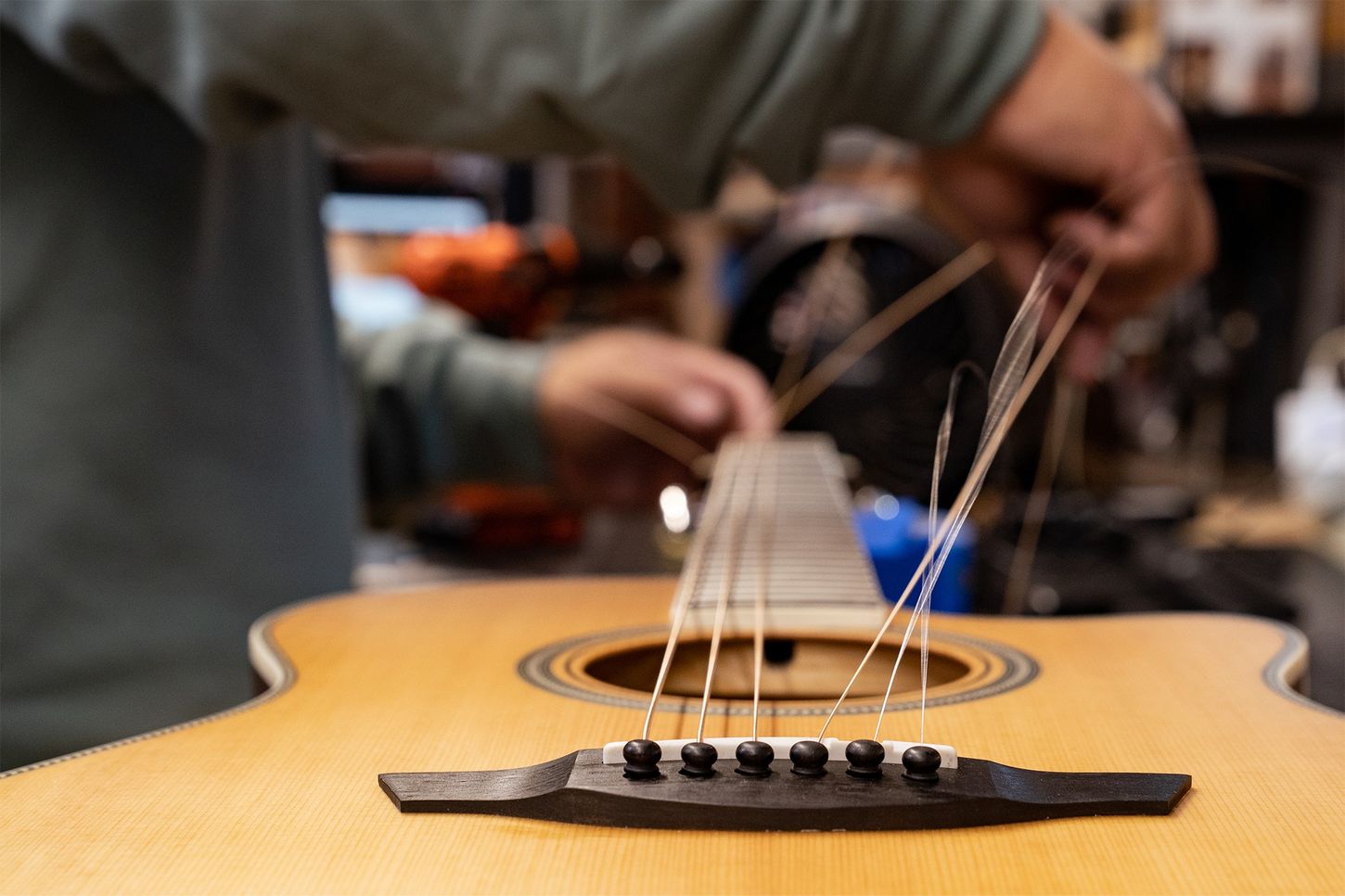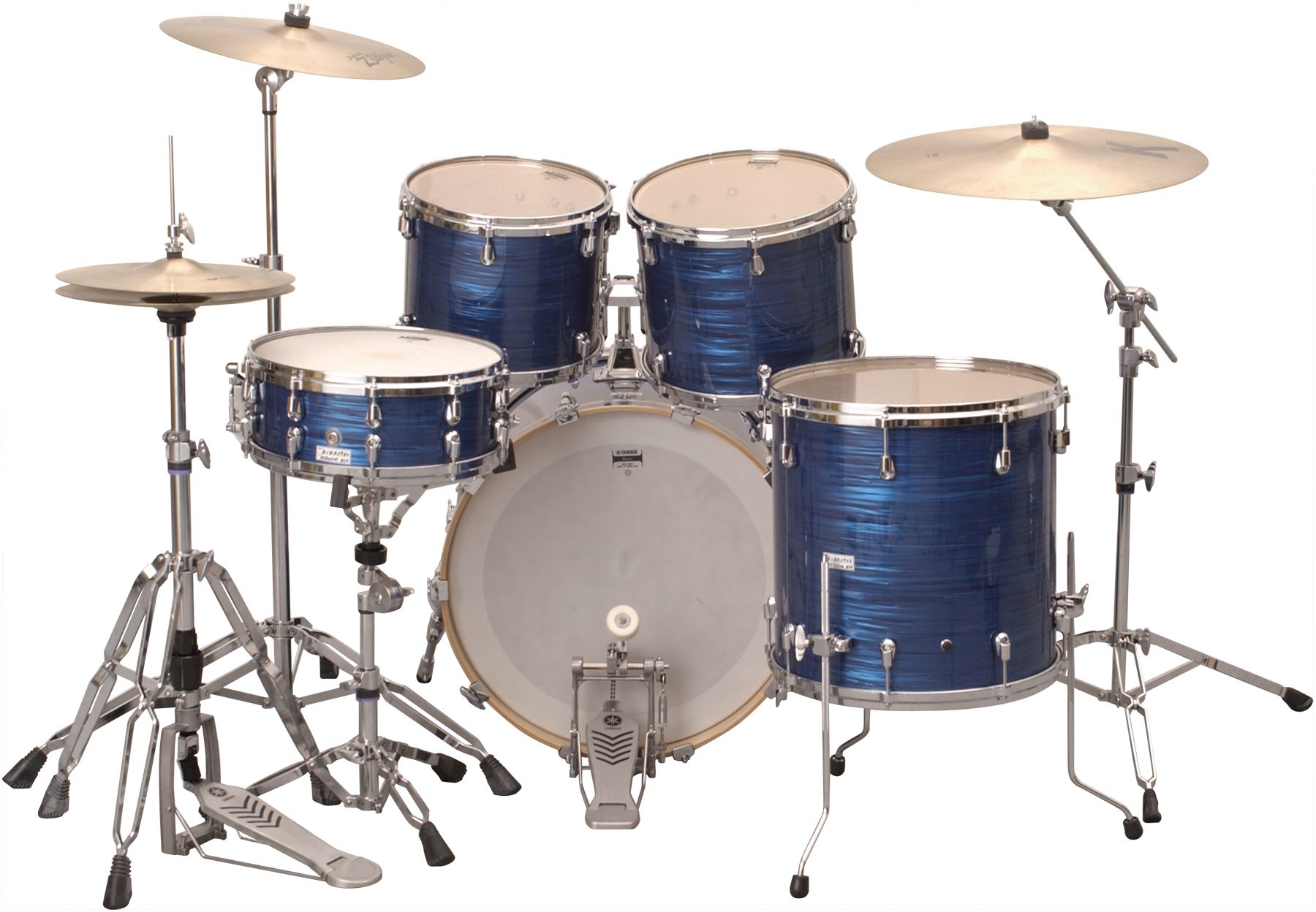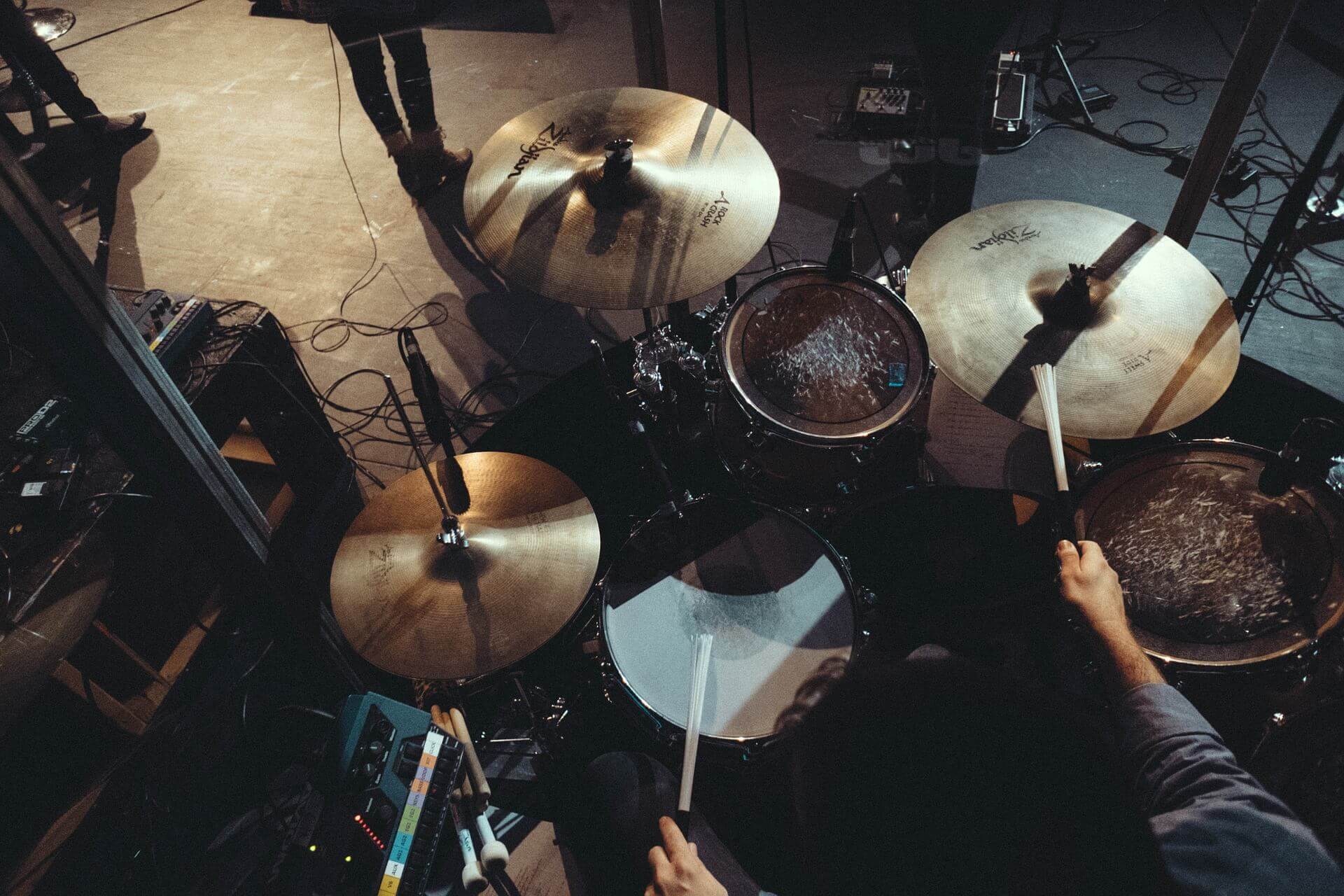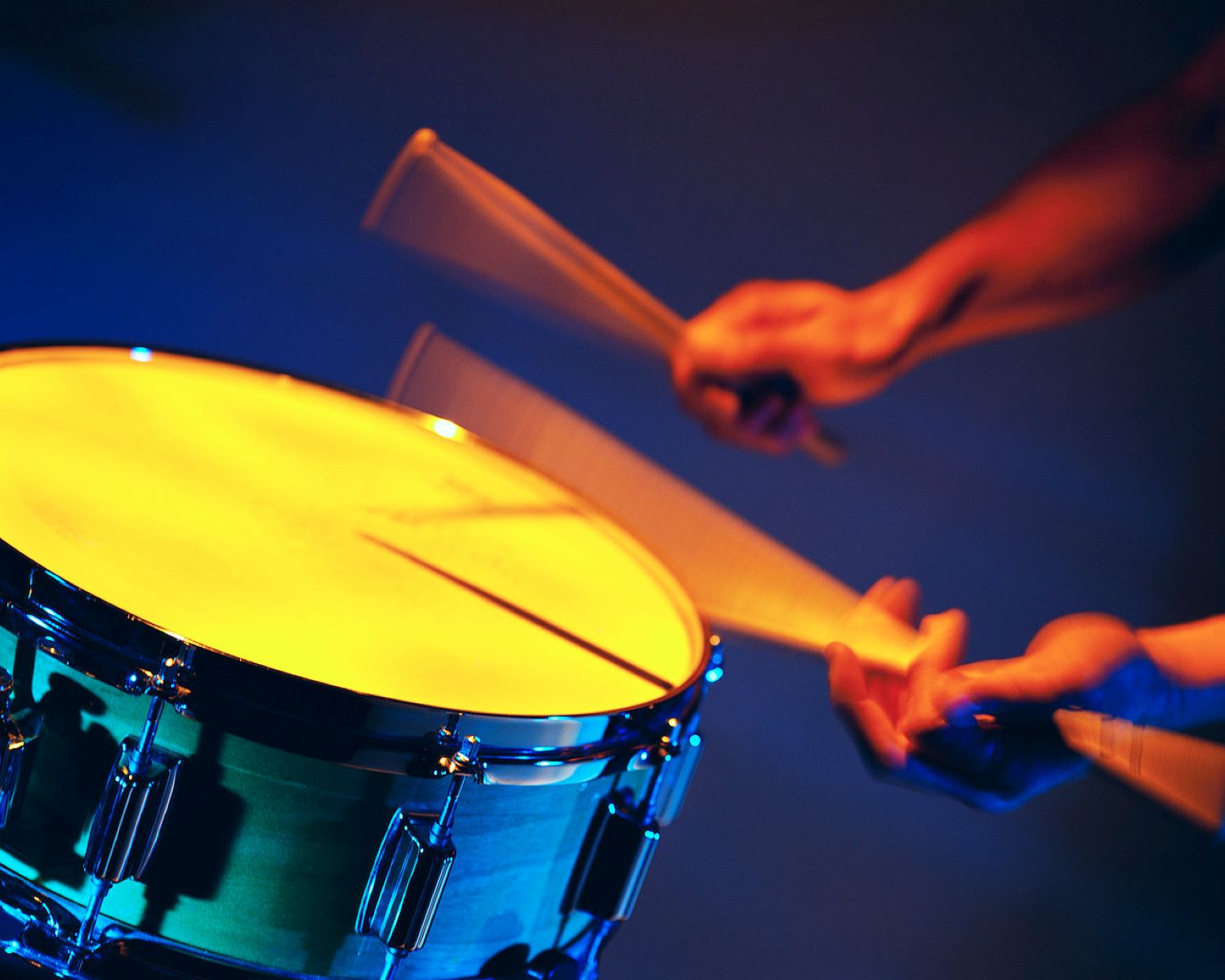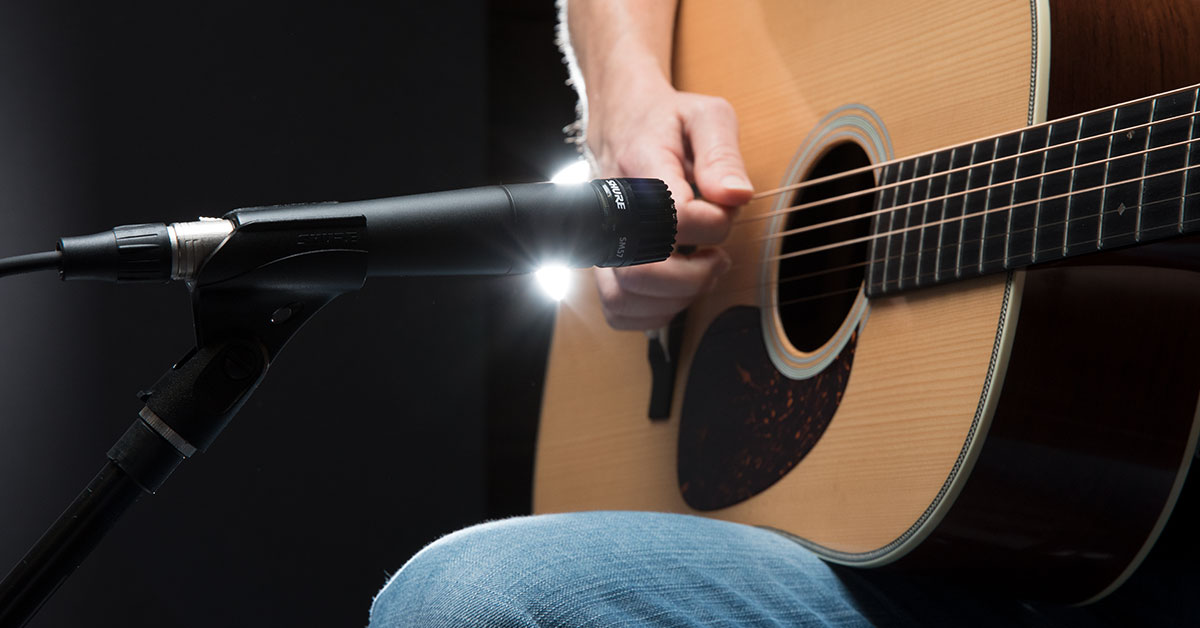Home>Production & Technology>Acoustic>How To Record Acoustic Drums


Acoustic
How To Record Acoustic Drums
Published: March 13, 2024
Learn how to properly record acoustic drums with our comprehensive guide. Discover essential techniques and tips for capturing the perfect sound.
(Many of the links in this article redirect to a specific reviewed product. Your purchase of these products through affiliate links helps to generate commission for AudioLover.com, at no extra cost. Learn more)
Table of Contents
Introduction
Recording acoustic drums is an art form that requires a delicate balance of technical expertise and creative finesse. Capturing the rich, dynamic sound of a drum kit in a recording is a rewarding challenge that can elevate the overall quality of a musical production. Whether you are a seasoned audio engineer or a passionate drummer looking to capture your performances, understanding the intricacies of recording acoustic drums is essential for achieving professional-grade results.
When it comes to recording acoustic drums, the process involves more than just setting up microphones and pressing the record button. It requires a deep understanding of acoustics, microphone placement, and recording techniques to faithfully reproduce the nuanced tonal characteristics and dynamic range of the drum kit. Each component of the drum kit, from the thunderous kick drum to the shimmering cymbals, contributes to the overall sonic landscape, and capturing each element with precision is crucial for a well-balanced and impactful drum sound.
In this comprehensive guide, we will delve into the intricacies of recording acoustic drums, covering everything from setting up the microphones to choosing the right recording techniques. Whether you are recording in a professional studio environment or a home recording setup, the principles and techniques discussed in this guide will empower you to capture the essence of the drum kit with clarity and depth.
Recording acoustic drums is a journey that requires patience, experimentation, and a keen ear for detail. By mastering the art of recording drums, you can breathe life into your musical compositions and elevate the sonic impact of your recordings. Join us as we explore the fascinating world of recording acoustic drums and unlock the secrets to capturing the thunderous energy and subtle nuances of this timeless instrument.
Setting up the microphones
Setting up the microphones for recording acoustic drums is a critical step that lays the foundation for capturing the full sonic spectrum of the drum kit. The arrangement of microphones around the drum kit plays a pivotal role in capturing the individual components of the kit, such as the kick drum, snare drum, toms, and cymbals, while maintaining a cohesive and balanced sound. To achieve a professional-quality drum recording, it is essential to strategically position the microphones to capture the nuances and dynamics of each drum and cymbal.
The fundamental principle of microphone placement for recording drums revolves around achieving a balanced blend of direct and ambient sound. This involves strategically positioning microphones to capture the direct sound of individual drums while also capturing the natural ambience of the room. By striking this balance, the resulting drum recording will exhibit depth, dimension, and a sense of space, contributing to a more immersive listening experience.
When setting up microphones for recording acoustic drums, it is common to use a combination of close miking and ambient miking techniques. Close miking involves placing microphones in close proximity to the individual drums to capture their distinct tonal characteristics and transient response. On the other hand, ambient miking involves capturing the overall sound of the drum kit within the room, adding depth and natural reverberation to the recording.
The kick drum, being the foundation of the drum kit, often requires a dedicated microphone placed just inside the drum's sound hole to capture the deep low-end frequencies and the punchy attack. The snare drum is typically miked from the top and bottom to capture the snap of the drumstick impact and the sizzle of the snare wires. Toms are usually miked individually to capture their unique tonal qualities and resonance.
In addition to close miking, overhead microphones are strategically placed above the drum kit to capture the overall sound and cymbal wash. These microphones contribute to the ambient and spacious quality of the drum recording, adding depth and dimension to the overall sound.
Furthermore, room mics can be positioned at a distance from the drum kit to capture the natural reverberation and ambience of the room. This adds a sense of space and liveliness to the drum recording, enhancing the overall sonic impact.
By carefully setting up the microphones to capture the individual components of the drum kit while also incorporating the natural ambience of the room, you can lay the groundwork for a well-balanced and immersive drum recording. The next step involves choosing the right microphones to complement the recording setup and capture the nuances of the drum kit with precision and clarity.
Placing the microphones
Placing the microphones for recording acoustic drums is a meticulous process that significantly influences the overall sound quality and sonic character of the drum recording. The placement of microphones around the drum kit is crucial for capturing the individual tonal nuances and dynamic range of each drum and cymbal, ultimately shaping the sonic identity of the recording.
When it comes to capturing the kick drum, positioning the microphone just inside the drum's sound hole is a common practice. This placement allows the microphone to capture the deep low-end frequencies and the impactful attack of the kick drum, essential for anchoring the rhythm section of the music. Additionally, experimenting with different distances and angles can help fine-tune the balance between the low-end thump and the beater impact, allowing for a more tailored and impactful kick drum sound.
For the snare drum, employing both top and bottom microphones is a popular technique. Placing a microphone above the snare drum head captures the sharp attack and tonal characteristics, while a microphone positioned underneath captures the sizzle of the snare wires and the resonant body of the drum. This dual-miking approach provides a comprehensive representation of the snare drum's complex sound, allowing for greater control and flexibility during the mixing process.
When it comes to the toms, individual close miking is often employed to capture the unique tonal qualities and resonance of each drum. Placing microphones close to the drum heads allows for precise capture of the transient response and sustain, enabling the toms to cut through the mix with clarity and definition. Experimenting with microphone placement and polar patterns can further refine the tonal balance and ensure that each tom drum is faithfully represented in the recording.
In addition to close miking, overhead microphones play a crucial role in capturing the overall sound of the drum kit and cymbals. Placing overhead microphones strategically above the drum kit allows for the capture of the cymbal wash, as well as the overall balance and cohesion of the drum kit. Adjusting the height and stereo configuration of the overhead microphones can influence the sense of space and dimension in the drum recording, contributing to a more immersive and expansive sonic experience.
Furthermore, incorporating room mics at a distance from the drum kit can enrich the recording with natural ambience and reverberation. The placement of room mics influences the spatial depth and liveliness of the drum recording, adding a sense of air and dimension to the overall sound.
By meticulously placing the microphones to capture the individual characteristics of each drum and cymbal while also integrating the natural ambience of the room, you can lay the groundwork for a captivating and well-balanced drum recording. The next step involves selecting the right microphones to complement the recording setup and faithfully capture the sonic nuances of the drum kit.
Choosing the right microphones
Selecting the appropriate microphones for recording acoustic drums is a pivotal decision that directly impacts the fidelity and sonic character of the drum recording. The diverse tonal characteristics and dynamic range of the drum kit necessitate a thoughtful approach to microphone selection, ensuring that each component of the kit is faithfully captured with clarity and precision.
When it comes to choosing microphones for recording acoustic drums, it is essential to consider the unique sonic qualities of each drum and cymbal, as well as the overall sonic image desired for the recording. Dynamic microphones are commonly used for close miking individual drums, offering robust transient response and the ability to handle high sound pressure levels, making them well-suited for capturing the punch and impact of drums such as the kick drum and snare drum. Shure SM57 and Sennheiser MD 421 are popular choices for snare drum miking, renowned for their ability to capture the crisp attack and nuanced body of the snare drum.
For capturing the deep low-end frequencies and resonance of the kick drum, dynamic microphones such as the AKG D112 and Electro-Voice RE20 are favored for their ability to reproduce the powerful thump and articulation of the kick drum. Additionally, condenser microphones with extended low-frequency response can also be employed to capture the full-bodied character of the kick drum, adding depth and definition to the low-end frequencies.
When it comes to miking the toms, dynamic microphones such as the Sennheiser MD 421 and Audix D4 are popular choices, offering tailored frequency response and the ability to capture the transient attack and sustain of the toms with clarity and definition. Experimenting with different microphone models and polar patterns can provide flexibility in shaping the tonal balance and presence of the toms in the overall drum mix.
In the realm of overhead and ambient miking, condenser microphones are often preferred for their extended high-frequency response and detailed transient capture. Microphones such as the Neumann KM 184 and AKG C414 excel at capturing the shimmering brilliance of cymbals and the overall spatial image of the drum kit. Their ability to faithfully reproduce the intricate nuances and natural ambience of the drum kit contributes to the overall depth and dimension of the drum recording.
By carefully selecting microphones that complement the sonic characteristics of each drum and cymbal, you can ensure that the recording captures the full sonic spectrum of the drum kit with fidelity and impact. The next step involves exploring recording techniques to harness the potential of the chosen microphones and achieve a compelling drum sound.
Recording techniques
Recording techniques play a pivotal role in capturing the nuanced tonal characteristics and dynamic range of acoustic drums with precision and artistry. By employing a combination of established recording methods and innovative approaches, engineers and musicians can shape the sonic identity of the drum recording, elevating it to a professional standard.
One fundamental recording technique for capturing acoustic drums is the use of multi-microphone setups, which allows for individual control and manipulation of each drum and cymbal during the mixing process. Close miking, where microphones are placed in close proximity to the drums, enables detailed capture of the transient response and tonal nuances of each drum, providing clarity and definition in the mix. Additionally, employing overhead and ambient miking techniques contributes to the overall spaciousness and natural ambience of the drum recording, enhancing its depth and dimension.
Another essential technique is the utilization of proper phase alignment and microphone placement to ensure coherency and clarity in the drum recording. By aligning the phase relationships between close mics and overhead/ambient mics, engineers can prevent phase cancellations and achieve a cohesive and impactful drum sound. Additionally, experimenting with microphone placement and polar patterns can influence the tonal balance and spatial imaging of the drum kit, allowing for creative manipulation of the recorded sound.
Furthermore, the incorporation of dynamic microphone processing techniques, such as compression and equalization, can shape the transient impact and tonal balance of the drum recording. Applying subtle compression to individual drum tracks can enhance the punch and sustain of the drums, while strategic equalization can sculpt the frequency response and address any tonal imbalances. Moreover, utilizing room mics in conjunction with reverb and delay effects can add a sense of depth and dimension to the drum recording, creating a more immersive sonic experience.
In addition to traditional recording techniques, the concept of capturing drum performances in a live, unprocessed manner has gained popularity. This approach focuses on capturing the raw energy and organic dynamics of the drum performance without excessive processing, aiming to preserve the authenticity and natural character of the drums. By embracing the imperfections and nuances of live drum recordings, engineers can create a more emotive and genuine sonic portrayal of the drum kit.
By leveraging these recording techniques, engineers and musicians can unlock the full sonic potential of acoustic drums, creating captivating and impactful drum recordings that resonate with depth and clarity. The art of recording acoustic drums is a dynamic and multifaceted endeavor, where technical expertise and creative intuition converge to capture the essence of this timeless instrument.
Tips for achieving the best sound
-
Tune the drums: Before recording, ensure that the drum heads are properly tuned. Well-tuned drums not only produce a more balanced and resonant sound but also facilitate easier mixing and processing during post-production.
-
Experiment with microphone placement: Don't hesitate to experiment with different microphone placements to find the optimal positions for capturing the unique tonal characteristics of each drum and cymbal. Small adjustments can yield significant improvements in the overall sound.
-
Focus on the room acoustics: Pay attention to the acoustics of the recording space. Experiment with room treatment and placement of the drum kit to minimize unwanted reflections and enhance the natural ambience, contributing to a more cohesive and immersive drum sound.
-
Consider the drummer's perspective: When placing microphones, consider the drummer's perspective to capture the sound as they hear it. This can help maintain the natural balance and perspective of the drum kit in the recording.
-
Use high-quality preamps and converters: Investing in high-quality microphone preamps and analog-to-digital converters can significantly improve the fidelity and transparency of the recorded drum tracks, preserving the nuances of the performance.
-
Employ proper gain staging: Pay attention to gain staging to ensure optimal signal-to-noise ratio and prevent distortion. Proper gain structure at each stage of the recording chain is crucial for capturing clean and dynamic drum tracks.
-
Capture multiple takes: Encourage the drummer to perform multiple takes to capture different nuances and dynamics. Having a variety of takes provides flexibility during the mixing process and allows for the selection of the best-performed sections.
-
Monitor with precision: Use high-quality studio monitors or headphones to critically monitor the drum recording. Pay attention to the tonal balance, dynamics, and spatial imaging to make informed decisions during the recording process.
-
Collaborate with the drummer: Foster open communication with the drummer to understand their artistic vision and preferences. Collaborating with the drummer can lead to a more expressive and authentic drum performance, enhancing the overall sound of the recording.
-
Trust your ears: Ultimately, trust your ears and strive for a balance between technical precision and artistic expression. Listen attentively to the drum recording and make adjustments based on how it resonates emotionally and sonically.
By implementing these tips, you can elevate the quality of your drum recordings, capturing the essence of the instrument with clarity, depth, and impact.
Conclusion
In conclusion, the art of recording acoustic drums is a multifaceted journey that demands a harmonious blend of technical expertise, creative intuition, and a deep understanding of the instrument's sonic intricacies. Throughout this comprehensive guide, we have explored the intricacies of capturing the thunderous energy and subtle nuances of the drum kit, from setting up the microphones to selecting the right recording techniques. By delving into the nuances of microphone placement, selection, and recording techniques, we have uncovered the essential elements that contribute to a professional-grade drum recording.
Recording acoustic drums is not merely a technical endeavor; it is an art form that requires a keen ear for detail, a passion for sonic exploration, and a commitment to capturing the authentic essence of the instrument. The process of setting up microphones and placing them strategically around the drum kit is a meticulous endeavor that lays the foundation for capturing the full sonic spectrum of the drums and cymbals. By carefully selecting the right microphones and experimenting with placement, engineers and musicians can shape the sonic identity of the drum recording, ensuring that each component of the kit is faithfully represented with clarity and impact.
Furthermore, the exploration of recording techniques, such as multi-microphone setups, phase alignment, and dynamic processing, has shed light on the nuanced art of capturing the raw energy and organic dynamics of live drum performances. By leveraging these techniques, engineers can sculpt the sonic landscape of the drum recording, creating a captivating and immersive sonic portrayal of the instrument.
Additionally, the insightful tips for achieving the best sound serve as a valuable resource for aspiring engineers and musicians, offering practical guidance on tuning drums, experimenting with microphone placement, and fostering collaborative communication with drummers. These tips underscore the importance of attention to detail, thoughtful experimentation, and a commitment to sonic excellence in the pursuit of capturing the best possible drum recordings.
In essence, recording acoustic drums is a dynamic and rewarding endeavor that demands a marriage of technical precision and artistic expression. By embracing the principles and techniques outlined in this guide, engineers and musicians can embark on a sonic journey that elevates the impact and authenticity of their drum recordings, breathing life into musical compositions and captivating listeners with the timeless allure of acoustic drums.



